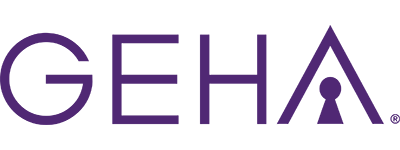Opioid use disorder is an equal-opportunity addiction. Anyone can be affected by opiate addiction and find themselves needing treatment at an opiate rehab in Arizona.
If you or someone you love is addicted to opiates, it is important to understand what opioids are and what an overdose looks like. Even more crucial is knowing what life-saving measures to take–and what to do after life-saving measures are taken.
What are Opioids?
Opioids are a specific class of drugs that include prescription pain and illicit drugs.
Some of the most commonly abused opioids include:
- Fentanyl
- Oxycodone (OxyContin, Percocet)
- Hydrocodone (Vicodin, Lortab)
- Heroin
- Codeine
- Morphine
- Methadone
- Demerol
- Dilaudid
- Tramadol
What is an Opiate Overdose?
An opioid overdose occurs when someone takes too much of these drugs, which can cause a person to stop breathing and lead to death.
Signs of an opiate overdose include unresponsiveness, shallow or slow breathing, blue or gray tinge to the skin, pinpoint pupils, or the production of gurgling or snoring-like sounds.
What is Naloxone?
Naloxone is an opioid antagonist. It is a life-saving medication that quickly reverses the effects of opioids and restores normal breathing.
It’s a crucial tool for anyone who may be at risk of an opioid overdose. Those at risk for overdose include people who take opioids for pain relief, those who use opioids recreationally, and their friends and families. Naloxone is easy to use and requires no special training. It can be the difference between life and death for someone who is experiencing an overdose.
What is the Brand Name of Naloxone?
Naloxone is available under several different brand names, including Narcan®, Zimhi, and Kloxxado®. Narcan® is the most commonly recognized brand name for naloxone.
How Do You Use Naloxone in Case of Overdose
Naloxone is a life-saving medication that can quickly reverse an opioid overdose. Here is a step-by-step guide on how to use naloxone:
- Assess for signs of an opioid overdose: If you do not know whether the person has taken an opioid, check for a blue or gray skin color, small pupil size, and assess the quality and sound of their breathing.
- Call 911: If you suspect an opioid overdose, it’s important to immediately call for emergency medical assistance. If you have naloxone, tell the dispatcher so they can provide additional instructions.
Important: Even if you were using opioids with the person experiencing an overdose, do not be afraid to call 911. Good Samaritan laws provide legal protection for individuals seeking medical help for someone overdosing, making it less intimidating to take action in a crisis situation. These Good Samaritan laws vary from state to state, but they all aim to protect people from being charged with a crime if they seek help for someone who is in danger.
Administering Naloxone
- Administer naloxone: Naloxone is available as a nasal spray or injection. If you have the nasal spray form, remove the cap, insert the tip into one nostril, and press the plunger to release the medication. If you have the injection form, remove the safety cap, hold the device firmly, and insert the needle into the upper arm, thigh, or buttock muscle. Press the plunger to release the medication.
- Stay with the person: Naloxone works quickly, and the person should start to revive within 2-3 minutes. However, the effects of the opioid may return after a short period, so it’s important to stay with the person and monitor their breathing until emergency medical services arrive.
- Repeat the dose if necessary. If the person doesn’t respond to the first dose of naloxone or the effects of the opioid return after a short period, you can administer another dose following the same steps.
Please note that naloxone is not a substitute for emergency medical care and that the person who has overdosed still needs to be taken to a hospital for further evaluation and treatment.
Why Naloxone Isn’t Enough
While naloxone saves lives, it does not treat addiction and should not be used as a long-term solution. Instead, it is a tool to help prevent opioid overdose deaths. It also gives people a chance to get the help they need to recover from addiction.
The best course of action, if you or someone you know is suffering from opiate abuse, is to seek treatment from an opiate rehab program in Arizona.
The Benefits of Opiate Rehab in Arizona with Wolf Creek Recovery
Opiate rehab programs are a crucial step on the journey to recovery and a better future.
If you or someone you know is struggling with opioid use disorder, opiate rehab programs in Arizona can provide the support and resources necessary for recovery.
At Wolf Creek, we’re with you throughout your recovery journey. Our three-phase recovery system includes (PHP), intensive outpatient (IOP), outpatient (OP), and extended care programs help you understand your addiction and develop new coping skills to prevent relapse and live a life free of substance use.
Full Recovery and Freedom are Beyond Naloxone
The opioid epidemic is a growing concern in Arizona and all across the United States. Naloxone is a crucial tool in saving lives during an overdose, but it is not the solution to opioid dependence. Our opiate rehab in Arizona offers a range of therapies and services to support people on their journey to recovery.
There is a better way to live.
If you or a loved one are suffering from opioid addiction, call and speak to a member of our admissions team today to take the first step in reclaiming your life.

Finding purpose in pain is what Jonathon does best. He is a strong advocate for those suffering from substance use disorders. As a person in recovery, Jonathon knows how important it is to receive empathy and compassion. He recognizes that each person comes from a different set of circumstances and deserves to be valued and respected.
With a fresh perspective and compassionate attitude, Jonathon works closely with clients to help them let go of the past and know when to take necessary risks. The recovery process is ongoing, which means people need to move forward while applying the skills learned in treatment. Jonathon is a great motivator when it comes time for this!
Jonathon also places emphasis on the family unit and how it can make or break the recovery experience. Individuals with active, supportive families have far better outcomes. Jonathon realizes that it’s impossible to move mountains overnight, but with the right support team and positive attitude, anything is possible.












